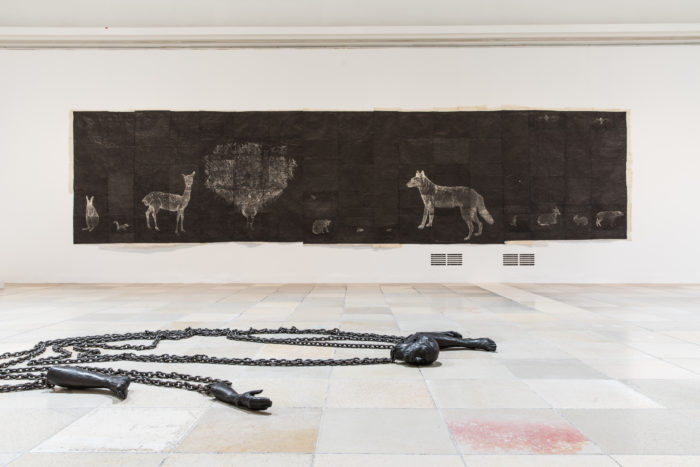
Feeling is not the same as articulation. This is the problem of both art and love. You can love a person or an object or a process until it hurts and still have no words for it. An art historian’s job is, in some sense, to intuit meaning, to translate art so that its resonance expands. This is also the lover’s job, to take fleeting touches and flirtation and dreams and create something that is multiple and actionable. Nothing speaks for itself, so, in interviewing Kiki Smith, I decided to speak through others. I asked Smith to respond to quotes from Lauren Berlant and Joan Didion. Below are her responses, without my sentimental interjections.

“I didn’t think it would turn out this way” is the secret epitaph of intimacy. To intimate is to communicate with the sparest of signs and gestures, and at its root intimacy has the quality of eloquence and brevity. But intimacy also involves an aspiration for a narrative about something shared, a story about both oneself and others that will turn out in a particular way. -Lauren Berlant, “Intimacy”
Yes, agreed, a banality, of course time passes. Then why do I say it, why have I already said it more than once? -Joan Didion, “Blue Nights”
“Art can be understood in a masked way, but at the same time it cannot be so idiosyncratic that it becomes impossible for someone to see what you have at stake. It’s not that you want to communicate the same thing particularly, or that people should understand it, but it has to have enough space in it so that other people can fill it in with their lives and not be caught in the artist’s own narrative. You don’t want to be trapped by narratives, because they’re just temporary. They’re useful, but they have a temporary quality, and sometimes they fit for a while, like love, but they don’t fit forever. So you don’t want to be attached to a prescribed version of how things could or should be, even though you have to live through the disappointment of those things not being able to sustain themselves. Some narratives and loves do sustain themselves, but only if they are complex enough, if they are ambiguous enough, or have enough contradictory aspects in them that they don’t become oppressive. They aren’t fixed.

I don’t want to work from an ideology. I’m not an artist trying to create one particular version of reality over another. You’re making temporary models of how things seem. Some people may have really profound clarity. I don’t have much clarity! It comes and goes and it is crashing all the time. Clarity doesn’t seem to be able to hold its sense of substance. Maybe that’s why art is a nice model for making things; it can move and have a fluidity. It’s inherently unsatisfying, because you keep re-wanting some experience of it, but it’s not like you figure something out and that’s it. Art does not encompass all, only a small part or aspect of something, and that way it gives us a lot of space. It’s modest in its ambitions. It doesn’t have to be like God. It could just be a momentary model.
Joan Didion is extremely witty and conscious. I am not a clever person, and I am not clever in my work. I don’t have much irony; maybe in some weird way I do, but not in a conscious way. I’m a believer, or I’m trying to find what could sustain itself longer than a moment. Art gives you an experience that you didn’t have before. You get to discover and experience something, even though you do the same things over and over again. Time presents itself as new at each moment, as long as we are here. It does continue, with or without us, but it has the opportunity inherent in it that our perceptions can change. We can’t change time’s trajectory, but we can change our relationship to time and to everything else. We can change our minds about time and love. Time is always the same, but it can move. There is a lot of space in time.”










 in your life?
in your life?

